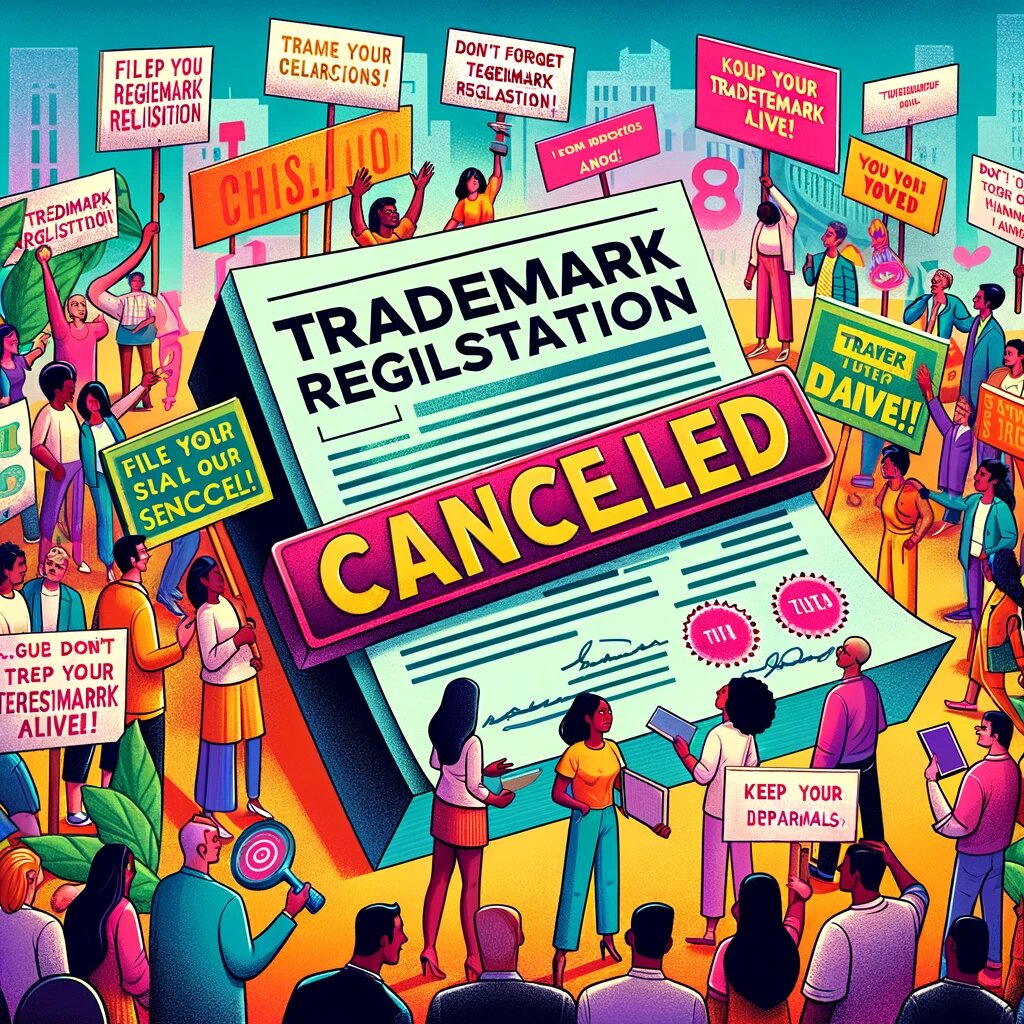Your cart is empty now.

Registration cancelled because registrant did not file an acceptable declaration under Section 8
- 09 April, 2024
- Nyall Engfield
Registration cancelled for failure to file Section 8
When a trademark registration is cancelled because the registrant did not file an acceptable declaration under Section 8, it means that the trademark owner failed to provide necessary documentation to the United States Patent and Trademark Office (USPTO) demonstrating the continued use of the mark in commerce. Section 8 of the Trademark Act requires such a declaration to be filed at specific intervals to maintain the registration of the mark.
Here’s what can be done if a trademark registration is cancelled for this reason:
1. Petition to Revive (if applicable)
- Timing is Crucial: If the cancellation was recent, you might be eligible to file a "Petition to Revive" the cancelled registration. This is possible if the failure to file the acceptable Section 8 Declaration was unintentional. You'll need to explain the reasons for the oversight and provide the required documents and fees. There’s a strict timeline for filing this petition, so act quickly.
2. File a New Application
- Starting Over: If too much time has passed or if a Petition to Revive is not successful, you may need to file a new trademark application. This means going through the application process again, including paying the fees and waiting for the examination process to be completed. It's as if you're applying for the trademark for the first time.
3. Assess and Learn
- Understand What Went Wrong: It's important to understand why the declaration wasn't filed or accepted. Was it a misunderstanding of the requirements, an oversight, or a procedural error? Knowing what went wrong can help prevent similar issues in the future.
4. Legal Consultation
- Seek Professional Advice: Consulting with a trademark attorney can provide you with specific guidance tailored to your situation. An attorney can help you navigate the process of reviving a cancelled registration, if possible, or advise on the best steps to take to reapply for your trademark.
5. Continued Use and Monitoring
- Maintain Use of the Mark: Continue using your trademark in commerce to establish and maintain your rights, even if you have to reapply. Also, keep monitoring for any potential infringements during this period to protect your brand.
6. Prepare for the Future
- Stay Informed: To prevent future cancellations, make sure you understand and docket all the maintenance requirements for a trademark registration, including the deadlines for filing Section 8 Declarations, Section 9 Renewals, and any other required documentation.
When similar trademarks are cancelled due to failure to file a Section 8 Declaration, it can present an opportunity for new applicants, but also comes with potential risks. Here are the benefits and considerations for someone looking to trademark in a space where similar marks have been cancelled:
Benefits
-
Less Competition: With similar marks cancelled, the trademark register is cleaner, potentially making it easier for new trademarks to be registered without facing objections based on confusion with existing registrations.
-
Stronger Position: If you successfully register your mark after similar ones have been cancelled, your position in defending against potential infringers strengthens, as there are fewer registered marks that could be confused with yours.
-
Opportunity to Fill a Void: The cancellation of similar trademarks might indicate a gap in the market or a chance to establish your brand in a space where competitors have let their protections lapse.
Considerations
-
Potential for Revival: Cancelled trademarks can sometimes be revived if the original registrant successfully petitions to the USPTO showing the failure to file was unintentional and the petition is filed within a certain period. This means a previously cancelled mark could potentially "come back to life" and pose a challenge to your application or use.
-
Common Law Rights: Even if a trademark is cancelled for failing to file a Section 8 Declaration, the original owner might still have common law rights to the mark based on continuous use in commerce. This could lead to potential legal challenges based on prior use, even if the formal registration has lapsed.
-
Due Diligence is Key: Before proceeding with a trademark application in this scenario, it's crucial to perform comprehensive due diligence, including searching for unregistered (common law) uses of the similar marks. This can help assess the risk of potential challenges.
-
Consider Legal Advice: Consulting with a trademark attorney can provide valuable insights into the specific risks and benefits in your situation. An attorney can help navigate potential challenges, including advising on the likelihood of a cancelled mark being revived or the implications of existing common law rights.
-
Monitoring the Register: After registering your mark, it's wise to monitor the trademark register for any attempts to revive similar cancelled marks, so you can respond appropriately if necessary.
In summary, while the cancellation of similar marks can create opportunities for new applicants, it's important to proceed with caution and be prepared for potential challenges.



